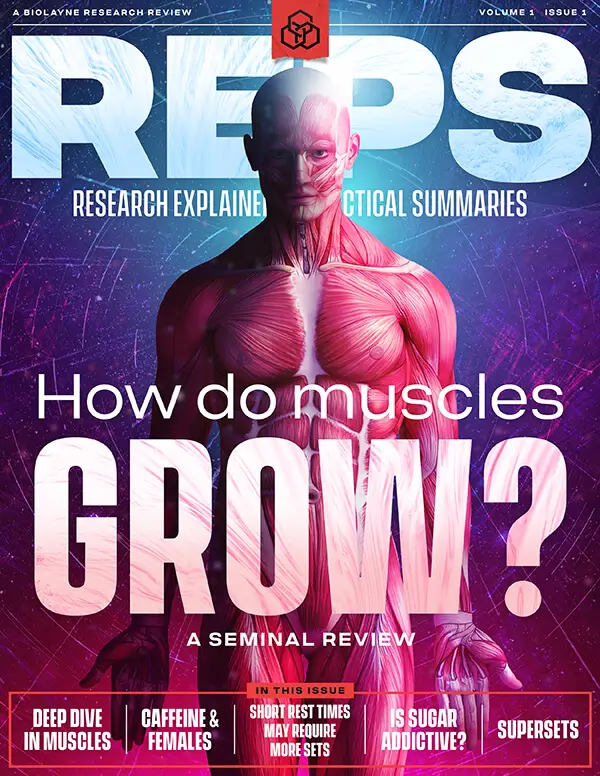A recent review casts doubt on the relationship between volume and hypertrophy, but it suffers from oversights, errors, and limitations which create a misleading snapshot of what the literature shows.
Overview
What did they test? The authors performed a narrative review of studies on volume and hypertrophy.
What did they find? Studies that have suggested a dose-response relationship between volume and hypertrophy have had magnitudes of muscle growth larger than what has been typically reported in other studies. Also, some studies have not shown any sort of dose-response relationship between set volume and hypertrophy.
What does it mean for you? At first glance, this review might have you thinking that volume may not be as important to hypertrophy as some have suggested, and that studies supporting a dose-response relationship are flawed. However, the review is misleading. It is missing important studies, contains errors in its assessment of certain studies, and has other limitations. There is a dose-response relationship for volume in some situations but not others. Volume is an important progressive overload tool that you can manipulate to help stimulate muscle gains. There is no “one-size-fits-all” volume or even range of volume. The appropriate volume will depend upon a variety of factors, including previous training volume, training experience, genetics, etc.
What’s the problem?
Purpose
“How many sets should I do?” has been a raging question since people first started lifting weights. It’s been such a raging question that entire philosophies have been generated around it, ranging from the Mike Mentzer ultra-low volume “Heavy Duty” approach of one set per exercise, to the ultra-high-volume approaches of some pro bodybuilders.
Research can help guide us to establish appropriate set volumes for hypertrophy, but many resistance training studies have been plagued by small sample sizes, and until the past five years or so, most studies only involved untrained subjects. Some of these studies suggested a relationship between volume and hypertrophy, but others did not. When there is conflicting data, particularly among a group of studies with small sample sizes, it can be helpful to have a meta-analysis (a “study of studies”) to give a general idea of the overall trend. In 2016, Brad Schoenfeld, Dan Ogborn, and I published a meta-analysis where we examined the impact of different weekly training volumes on hypertrophy 1. We found evidence of a dose-response relationship, with increasing hypertrophy up to 10+ weekly sets per muscle group. We had insufficient data to draw any conclusions at much higher volumes than that. Also, only two of the studies we included in our analysis involved subjects with weight training experience.
Since then, studies involving trained subjects have been published, with some involving volumes of up to 45+ weekly sets per muscle group. Some of these studies have not shown dose-response relationship for hypertrophy when going from lower to higher volumes 2 3 4 5. Other studies have shown a dose-response relationship 6 7 8 9.
Based on the existing data, many researchers have stated that volume is a primary driver of hypertrophy, and that a dose-response relationship exists between volume and hypertrophy. However, the authors of this narrative review were skeptical of that conclusion. Their purpose was to “explain why the current evidence cited for the importance of training volume in resistance trained individuals may not warrant the conviction expressed in position stands and expert statements.”








